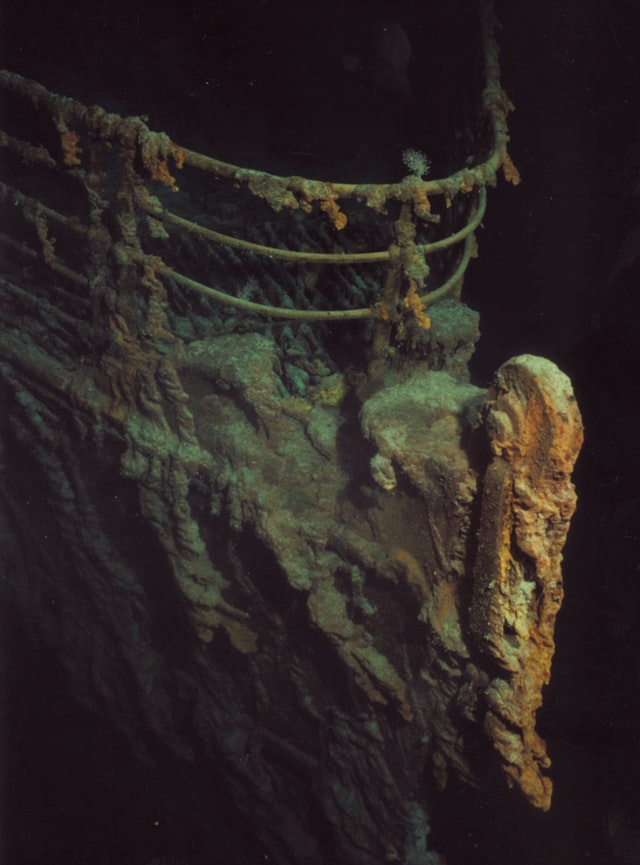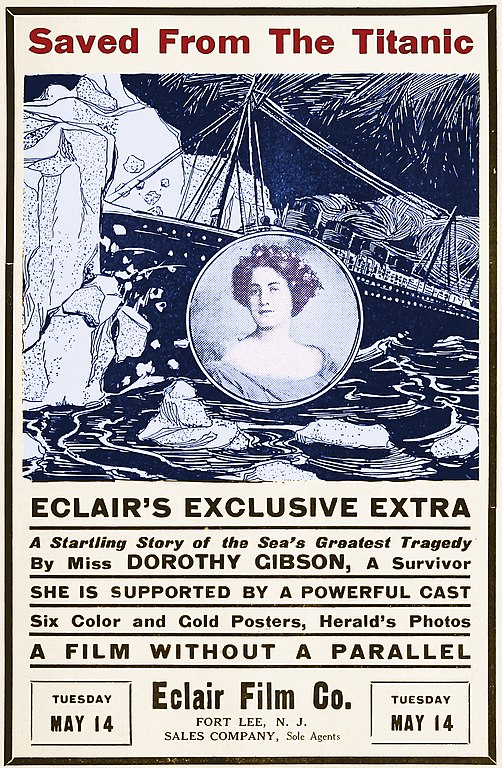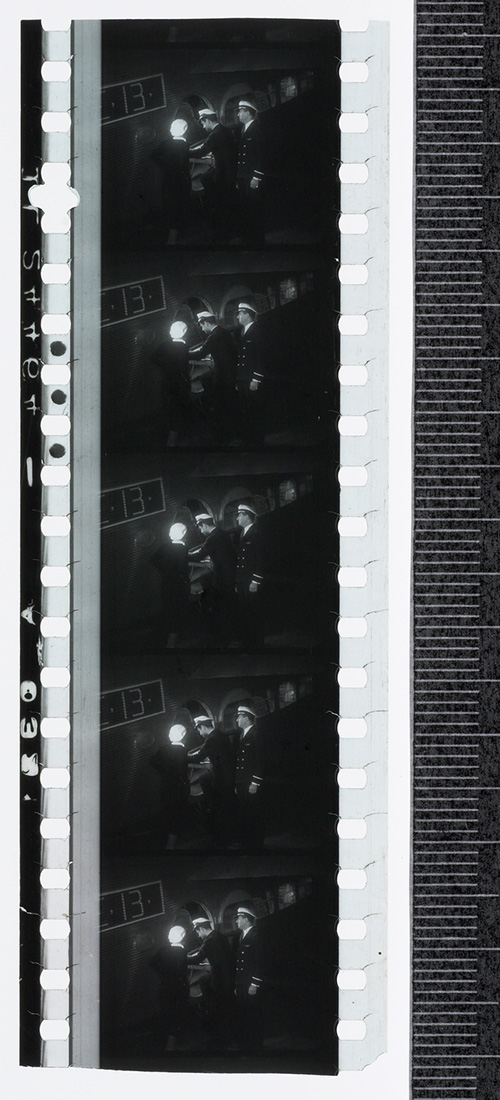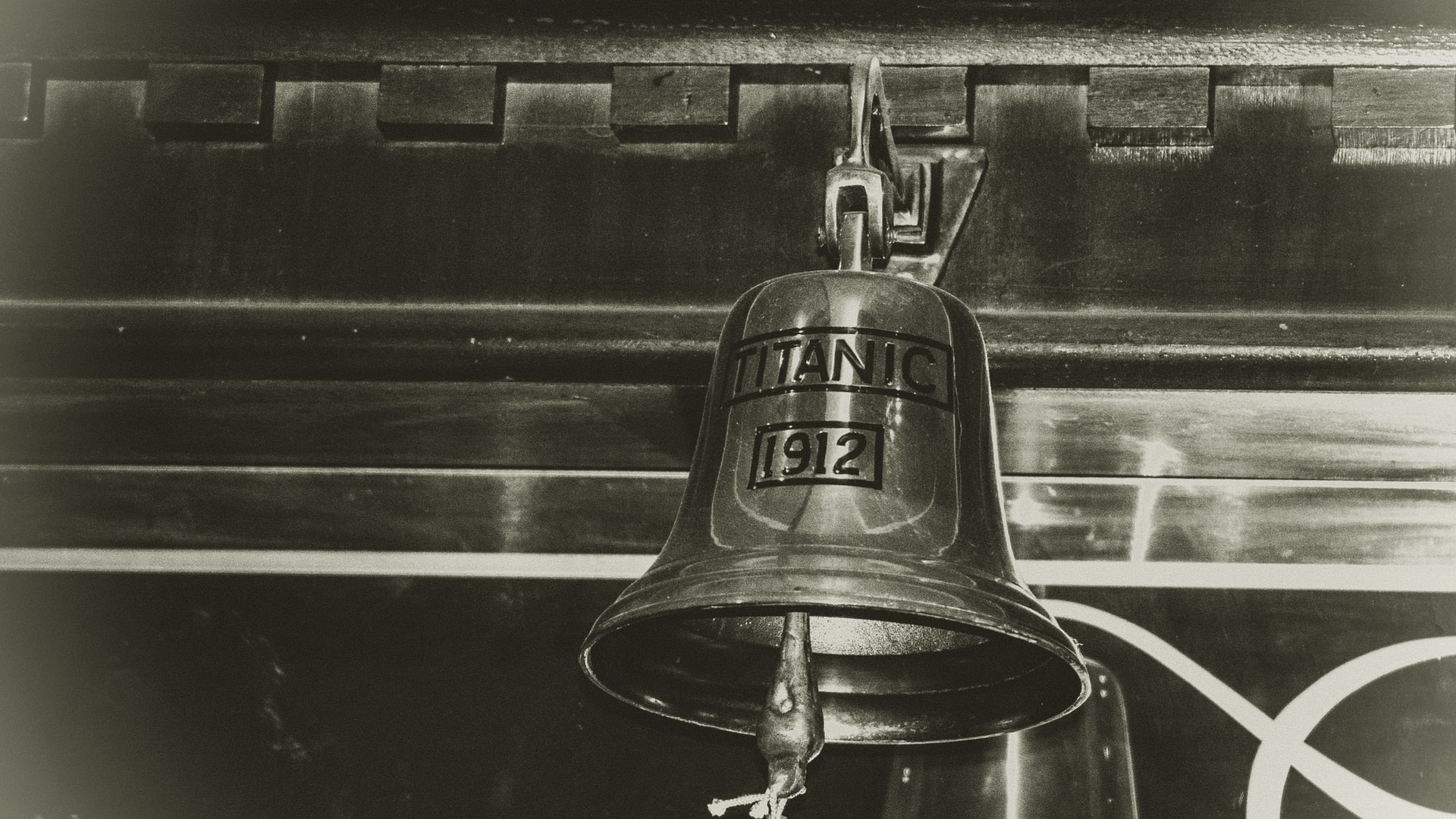2021 marks the 109th anniversary of the sinking of the Titanic. At 23.40 on 14 April 1912, the RMS Titanic hit an iceberg. By 02.20 on 15 April, it had split in two and descended to the bottom of the ocean. With that, the impossible had occurred: the unsinkable ship had sunk—and on its maiden voyage to boot!

29 days later, Dorothy Gibson wrote and starred in a 10-minute short film entitled Saved from the Titanic. In the film, Gibson recounted her experience aboard the RMS Titanic and her ultimate survival. She left the ship on the No. 7 lifeboat, the first to set sail. Gibson wrote a heavily fictionalised version of her experience, and even managed to include a recreation of the crash.
It was a critical and commercial success. Unfortunately, the last known prints of the film were destroyed in a fire at Éclair studio in March 1914. It is now a lost film. Nevertheless, Saved from the Titanic marks the earliest dramatisation of the event on film, and kickstarted over a century of dramatic reproductions.

1980’s Raise the Titanic, on the other hand, was an inarguable flop. In total, the film cost $40 million to make and, in the end, it only grossed $7 million. No one said it better than producer Lew Grade who remarked, ‘It would have been cheaper to lower the Atlantic’.
Five years after the making of Raise the Titanic, the real wreck of the ship would be discovered. Its discovery did not help the film; in fact, it highlighted the inaccuracies portrayed in the movie. Director Jerry Jameson had spent a large portion of the budget on a $5 million, 55-foot, 10-ton replica of the Titanic. It was the star of the show. In the film, Jameson implied that the Titanic survived in one piece, with only a funnel sustaining any real damage. With the discovery and exploration of the real wreck, this was disproven, and his replica became an oversized and useless toy.
In James Cameron’s 1997 film Titanic, the ship is accurately depicted as breaking apart in the middle and sinking in two pieces. However, Cameron had the real wreckage at his disposal to explore and cite as a reference, and made excellent use of this resource.
Cameron’s foray into the Titanic story was prompted by his love of both science and film-making. His love of these two disciplines shows and explains why 24 years later, the film is, potentially, the most beloved retelling of the event—at least, the most beloved among the three mentioned in this article, and definitely the most commercially successful. Cameron’s Titanic became the highest grossing film in history upon its initial release.
Countless other retellings of the event have appeared on the screen before, during and after the release of the three movies mentioned above, including a Nazi propaganda film in 1943 and an appearance in 1989’s Ghostbusters II.

So, where do we go from here? Is Hollywood finally finished with the Titanic story? Or is the story of the Titanic burned into the modern imagination in a similar way to that of Atlantis or the Trojan War? Perhaps—and if so, will we ever be able to release the hold that Titanic has on our hearts? If Rose DeWitt Bukater is anything to go by, that is a firm no.
